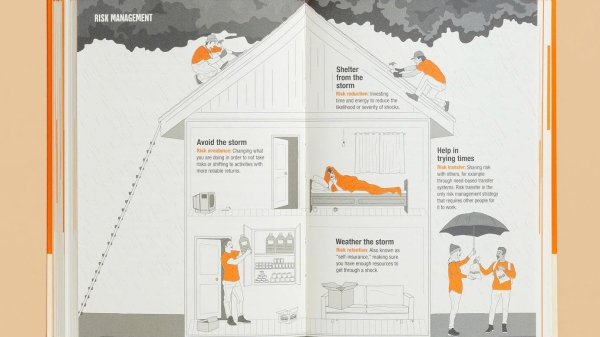If someone asked you to explain what the Internet of Things (IoT) is, could you? Even though the term was introduced by Kevin Ashton of Procter & Gamble in 1999, the idea actually dates back to 1982 when students at Carnegie Mellon University invented the first “thing” — an ARPANETAdvanced Research Projects Agency Network, aka the predecessor to the internet.-connected Coca-Cola machine.
To learn more about what IoT is, what’s currently happening in the field and how the Cox Connected Environments Collaboratory is integrating IoT into its processes, we checked in with three experts: Brian Nickell, product and integration lead for Smart Communities at Cox2M; Matt Shorts, head of product and technology at Cox2M; and Chris Richardson, deputy CIO of product ownership and leadership development at Arizona State University.
IoT 101
To define it simply, the Internet of Things describes the network of internet-connected physical objects (the “things”) that collect and transfer data using sensors. By collecting and transferring the data, these objects are improving user experience for things like wearable health monitors, connected appliances and smart home security systems.
“IoT is the latest evolution of the internet where we now connect things (products, gadgets, sensors, vehicles, etc.) to the internet for the purpose of offering new or advanced user experiences for gathering data or addressing other commercial/industrial needs,” Nickell said.
“IoT simply is the phase where objects that previously had no ‘voice’ can now ‘talk’ on the internet, much like people and computers before,” Shorts added.
Richardson said that connected cars and smartphones are examples of what a consumer might see and not think of as IoT.
“Tesla and Apple have the best use of IoT anywhere in the world,” Richardson said.

Brian Nickell
IoT allows you to deploy software updates that enhance your experience, like diagnostically understanding the health of your car or monitoring how your body moves with the iPhone or Apple Watch.
“The data collected is transforming your experience,” Richardson added.
How it started, how it’s going
To say that we’ve come a long way since that first IoT device is an understatement. According to reports, there are currently over 35 billion IoT devices installed worldwide and 75 billion predicted by 2025. Let that one sink in.
So, what is making all this innovation possible?
1. Lowering costs

Chris Richardson
“On the device side, we’ve seen many advancements in lower cost chipsets (MCUs) and efficiencies in power," Nickell said. "These solutions can now run on low-cost batteries for many years. Related to this is light and energy harvesting, so you then strive for less waste by not having to replace batteries but also reduce the maintenance aspect as well.”
Both Richardson and Nickell agreed that affordability plays a big role.
“The cost of sensors is coming down dramatically,” Richardson said, adding that the cost of storing data is also decreasing.
2. Technology advancements
On the connectivity side, Nickell said that whatever technology we use (Wi-Fi, Bluetooth, ultrawide band, LoRA or cellular technologies) is certain to advance every couple of years through industry alliances and standards bodies.
“Advancements could be across one or multiple areas: examples include user/device capacity, speed or bandwidth, range, etc,” he said. “This provides tremendous value for us and the industry in general and Cox is a member in most of these groups.”
3. Better data

Matt Shorts
Shorts said that the ability to capture and act on all the data that is now available has made a big shift in the industry.
“All these connected things give us new insights and capabilities that were not previously possible.”
4. The time is right
When it comes to smart cities, Richardson said that IoT “got a bad rap” because there was a lot of promise and hype without the products delivering at the same speed of rising popularity.
However, as the costs continue to decrease and people’s understanding of what’s possible is improving, he said, “Those who piloted it and stuck through (the smart city revolution) are seeing results. … There’s a bunch of components of tech that had to evolve for IoT to be realized.”
The future of IoT is bright … and more affordable, smarter and connected
Richardson believes that every industry will see broad adoption of IoT.
“Anything that can be connected will be connected in the future,” he said.
Meanwhile, Shorts thinks the focus on connectivity will shift to advancing insights on specific things like machine learning and artificial intelligence — helping experts unlock previously unseen value in the data will be a focus in the next 10 years.
“They enable us to be more predictive and prescriptive with the information we have,” Shorts said. “It’s no longer about looking at what we collected and trying to decide and actionize the data. The advancements in technology can identify those areas, call them out, and in some cases even action it without any human intervention at all. That's the most exciting because the systems can start to optimize themselves for the lower-level, less-value tasks where people can concentrate on the higher-value, human-only tasks.”
How the Cox Collaboratory integrates these trends on the ASU campus
Think of the Cox Collaboratory as a testing opportunity for some of these cutting-edge technologies.
“The Cox Collaboratory was set up because (Cox is) trusting ASU to bring ideas so that they can test their technology, test out whether there’s a product market fit,” Richardson said. “We can collectively share in that if we find the right uses.”
Nickell says it’s Cox’s goal to use the latest technology advancements to help solve problems that cities, campuses or the general public might encounter. For example, installing a LoRA network on the Tempe campus enables the improved DART service to function, but other projects can also utilize this network. The Collaboratory is also currently exploring how to use video analytics and machine learning to help the ASU community.
“Ultimately, the Collaboratory can help accelerate the most promising trends,” Shorts said. “If there is something that’s starting to gain steam, we can quickly do real-world testing or create proof of concepts to help further these trends. The Collaboratory can also help identify new trends as they emerge, because we can try out new technologies in an open environment that fosters collaboration and idea generation.”
Learn more about the Cox Collaboratory and contribute a big idea.
More Science and technology

ASU author puts the fun in preparing for the apocalypse
The idea of an apocalypse was once only the stuff of science fiction — like in “Dawn of the Dead” or “I Am Legend.” However…

Meet student researchers solving real-world challenges
Developing sustainable solar energy solutions, deploying fungi to support soils affected by wildfire, making space education more…

Miss Arizona, computer science major wants to inspire children to combine code and creativity
Editor’s note: This story is part of a series of profiles of notable spring 2024 graduates. “It’s bittersweet.” That’s how…
